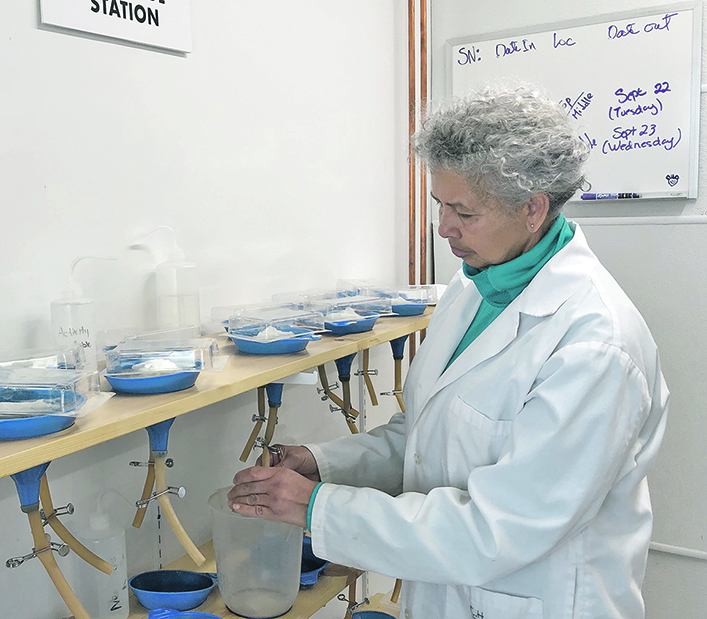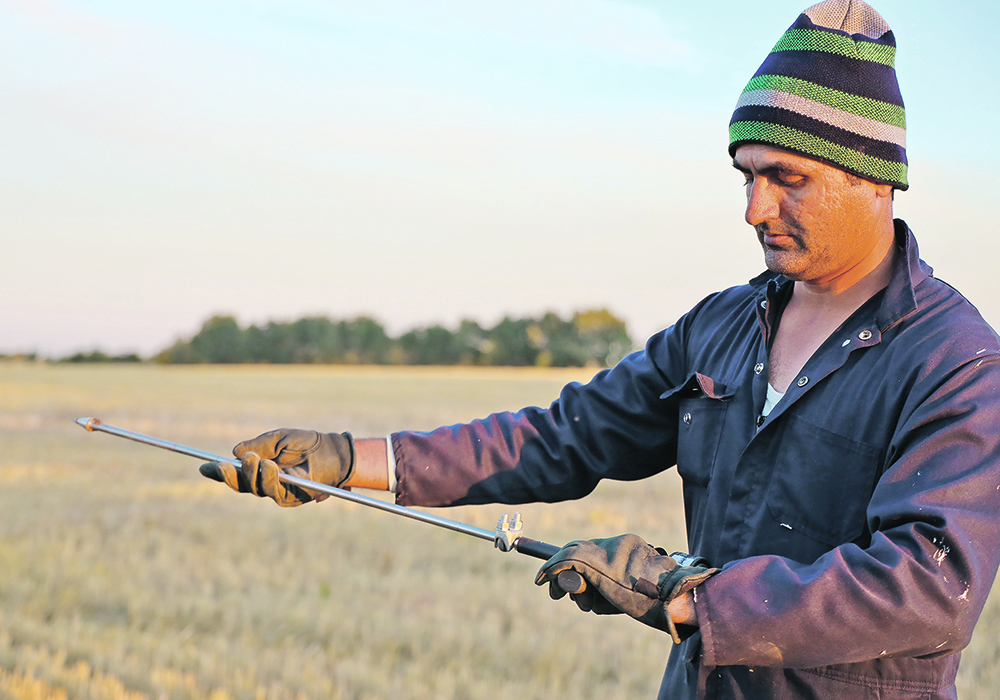Research and forage associations will follow specific protocols to take samples from 20 locations a year for five years
CAMROSE, Alta. — A small laboratory in central Alberta, cobbled together through donations and determination, may help farmers improve crop yields through soil samples.
Yamily Zavala, soil health and crop management specialist with the Chinook Applied Research Association in Oyen, is leading a study to understand and improve soil health across Alberta.
“Our goal is to help more of the farmers get in contact with the soil. They need to see what is out there in the soils. If they don’t see the soils as another world out there, they won’t change what they are doing,” said Zavala, who received her PhD in soil and plant nutrition from Cornell University before moving to the research association as a soils specialist.
Read Also

Farming Smarter receives financial boost from Alberta government for potato research
Farming Smarter near Lethbridge got a boost to its research equipment, thanks to the Alberta government’s increase in funding for research associations.
With CARA and Zavala leading the Soil Health Benchmarking Project, 11 research and forage associations across the province are following specific protocols to take soil samples from 20 locations each year for five years.
The samples are sent to CARA’s soil research lab and analyzed and the results sent back to the association and farmers. Three years later, using GPS tracking, the associations will resample the same fields to try and understand if anything has changed with different management, based on the initial tests.
The study is looking at three main indicators of soil health: biological, physical and chemical. Knowing more about soil will allow farmers to make changes to improve yields and conditions and ensure carbon sequestration.
“If one is affected, the others are affected. They are all interrelated.”
Already after two years of samples, Zavala said some issues are emerging.
Soil compaction, stability of soil aggregates (which can cause erosion), and a lack of diversity in micro-organisms within the soil are the most common issues Zavala sees in the early samples.
“There is not a good diversity of micro-organisms. The more diversity you have the better,” she said.
In some samples, there are more root-feeding nematodes than good nematodes.
A lack of nitrogen and sulfur and an unbalance of micronutrients appear to be common factors in most of the samples.
By gaining a better understanding of the most common soil problems in each area of the province, the different research groups can begin to work with farmers to find the best way to solve the problems.

“To me, that is the beauty of all of this — what is the major constraint and start focusing on those issues,” Zavala said.
The information from the soil reports can help farmers make changes to improve soil health and yield. Improved soil health can lead to improved crop quality.
“If you can do some management to improve physical components, you can open the soil for microbes and other creatures to be more active and do their job in the soil.”
Zavala said part of their laboratory has been transformed into a teaching laboratory. Farmers come into the lab and learn how to use the microscopes and begin to do soil evaluation on their own farms.
“We have farmers interested in this and they get more interested when they get exposed to what we do. The more exposed, the more questions they have with us. It is a movement that is going on underground that is making this happen.”

















